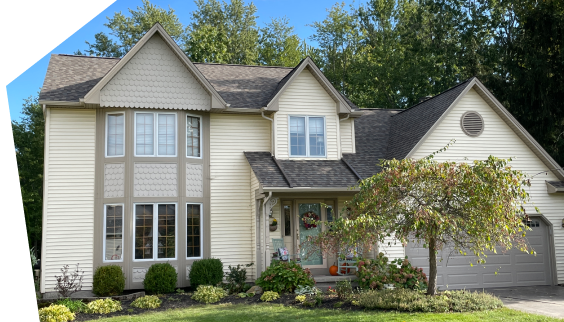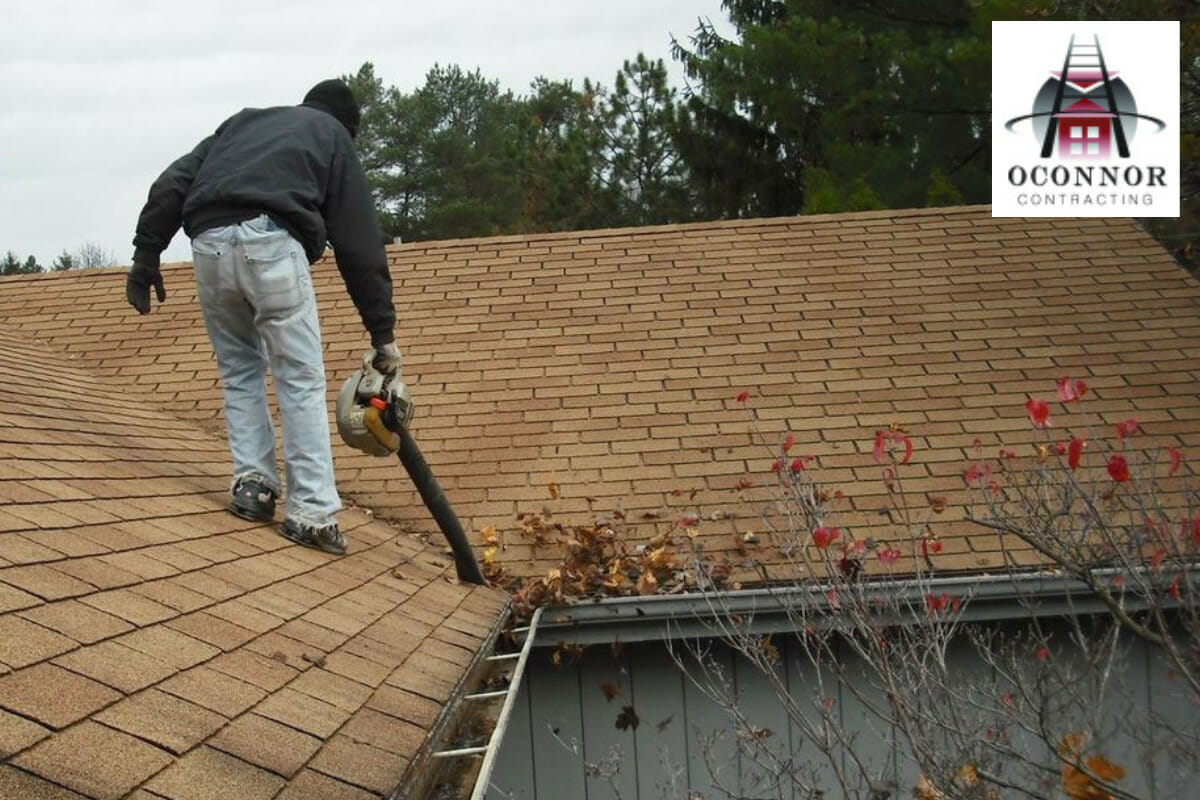Spring cleaning is the ideal opportunity to assess your home for any damage caused by the harsh winter weather and to ensure proper maintenance. Every part of your home, from the interior to the roof and garage, should be checked for any issues. However, some homeowners might overlook critical areas of their roofs during the cleaning process.
At OConnor Contracting, we’re here to help you complete your spring cleaning checklist. In this blog post, we’ll explain why it’s crucial to clean your roof during springtime and highlight some often-overlooked areas that require special attention.
Why Should You Clean Your Roof During Springtime?
Your roof is the first line of defense against the elements, and there are several reasons why you should clean it during springtime.
#1 Assess Snow & Ice Damage
Roof cleaning and inspection go hand in hand. While cleaning, it’s crucial to assess the roof for any damage from windstorms, ice dams, or heavy snow build-up. By getting a complete roof inspection before cleaning, you can address any issues early on to avoid costly repairs and replacements down the line.
#2 Keep Hot Air Outside & Prevent Humidity Buildup
Cleaning your roof can indirectly promote insulation by ensuring that your roof and its components function optimally. A clean roof allows for better detection of any damages or issues, such as missing or damaged shingles, cracked or broken tiles, or blocked vents. By addressing these issues promptly, you can maintain the integrity of your roof’s insulation.
A well-maintained roof helps keep a consistent temperature within your home by preventing drafts and heat loss. Additionally, clean gutters and downspouts allow for proper drainage, reducing the risk of water infiltration, which can lead to dampness and reduced insulation effectiveness.
#3 Most Roofers Are Busy During Summertime
Springtime is an ideal time to clean your roof, as most roofers are busy during the summertime. By cleaning your roof in the spring, you can identify any necessary repairs before the busy summer season and ensure that your roof gets prompt repairs and is in good shape for the months ahead.
Additionally, you may be able to find more reliable contractors and lower labor costs than in the summer. By taking advantage of the slower roofing season, you can ensure that your roof is in good shape and avoid competing with the rush of summer roofing projects.
With that in mind, you should add your roof to your outdoor spring cleaning checklist right away! Now let’s discover the hidden spots on a roof that may go unnoticed during cleaning.
Add These Six Spots to Your Spring Cleaning List
You may already know that shingles and rain gutters need a good cleaning. But some hidden or hard-to-reach spots on your roof may be missed during spring cleaning. Let’s talk about those parts of your roof.
#1 Dead Valleys
If your roof has a dead valley, it’s primarily because of an improper roof installation. A dead valley on a roof is an area where two or more roof slopes meet, but where there is little to no slope at the meeting point. This means that there’s no way for water and debris to slide off the roof on their own. You may find this area where a roof intersects with another roof or wall.
#2 The Backside of Your Chimney
The backside of the chimney is another hidden area that can easily be missed during spring cleaning. This area is located behind the chimney and is often difficult to access, making it a prime spot for debris buildup. It should be covered by an additional structure called a cricket, which prevents debris and water buildup. However, if your chimney has nothing attached at the back, it’s a roofing fault, and you must prep the area.
The backside of a chimney without a cricket tends to get filled with debris and algae growth. The fungus thrives in moisture, feeding on organic materials like asphalt, cellulose, and wood. So, you must call a skilled and reliable residential roofer to install a chimney cricket. Make sure to add this task to your spring cleaning checklist so you can avoid damage from improper roofing.
#3 Vents
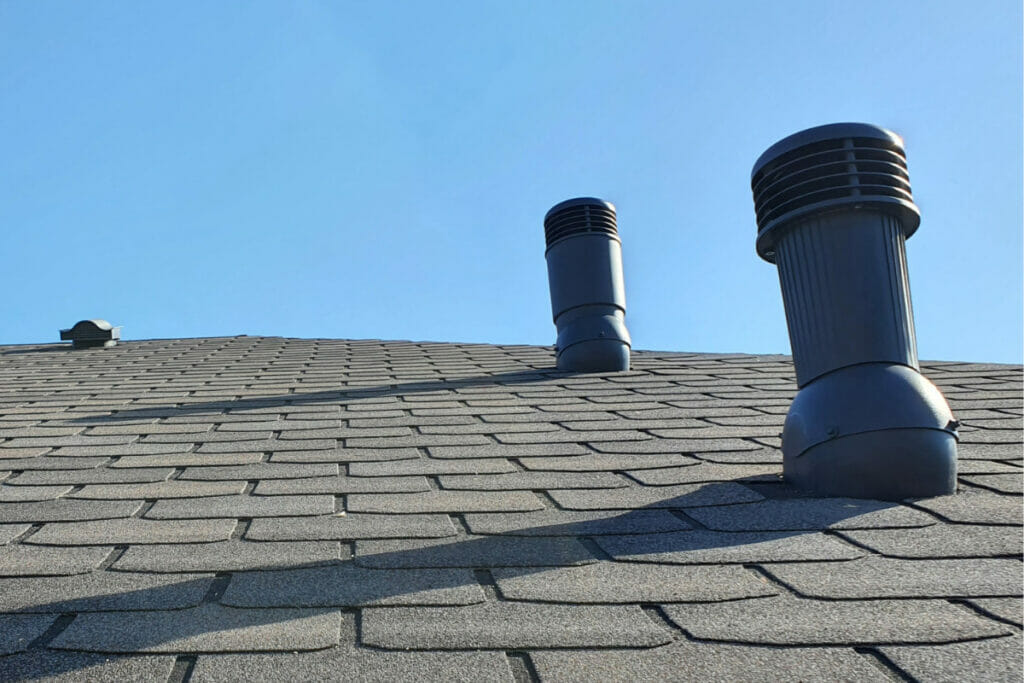
There are two common types of roof vents on homes: plumbing and attic vents. Plumbing vents are pipes that protrude from the roof to ventilate the drainage system within your home. Attic vents (box, turbine, and power vents) push out stale warm air from the attic, helping with roof and attic ventilation.
These vents are prone to getting dirty as plumbing pipes can collect debris and grime, while algae tend to build up behind box vents. This hinders proper airflow, and poor ventilation is one of the leading causes of damage to roofs and attics. In the case of plumbing vents, too much pressure can result in plumbing leaks or a pipe bursting, so it’s crucial to inspect and clean this area thoroughly after a harsh winter.
#4 Skylight Frames
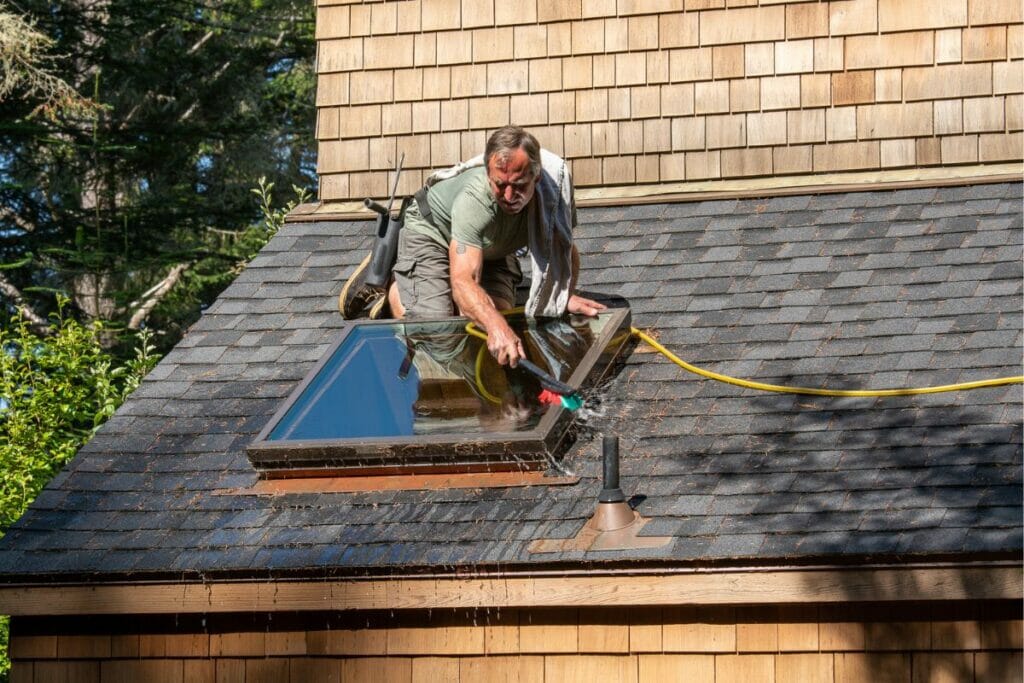
Skylights are a popular feature in many homes, providing natural light and a connection to the outdoors. But they can also get dirty if not cleaned regularly, and this involves more than just wiping down the glass from the inside and out. It’s just as important to clean the skylight frame as it is to clean the glass.
Debris and fungus can accumulate around the frame, which is connected to the insulation, sheathing, and rafters. When the fungi feed on the roofing material, these parts of your roof will begin to deteriorate. So, add this leak-prone area to your spring cleaning checklist and prevent expensive structural damage to your home.
#5 Soffits
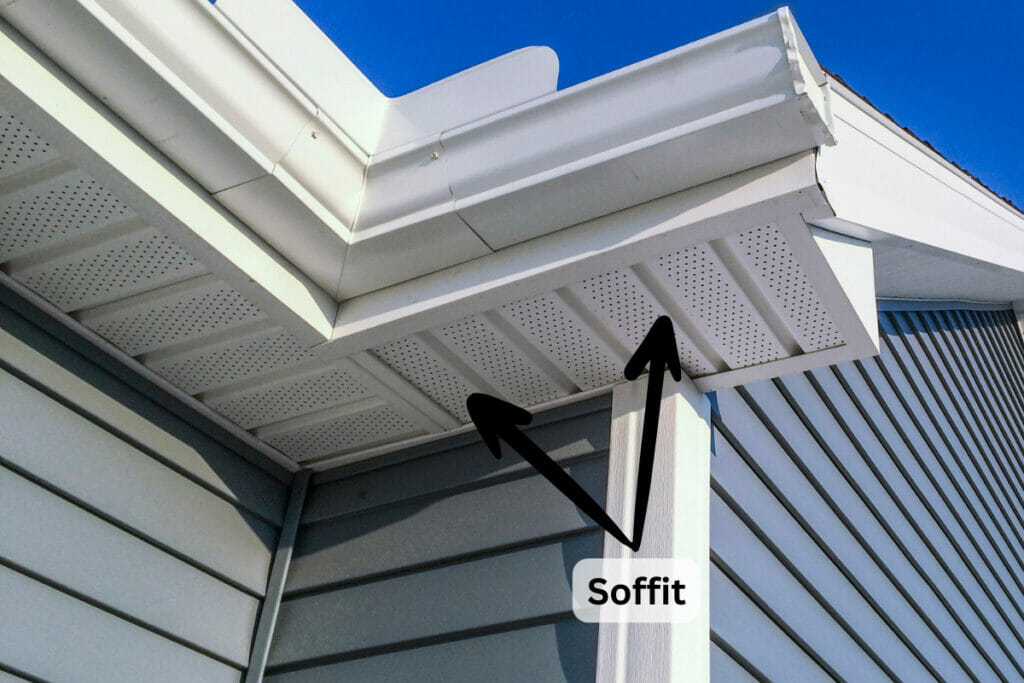
Soffits are the exposed undersides of the roof overhang. These boards are either closed or have vents in the form of perforations or boxes. Soffits help protect the roof’s structure and attic from moisture and pest infestation. Paired with attic ventilation, soffit vents provide fresh air to the interior of your home and maintain airflow.
These boards can often accumulate dirt, dust, and other debris, especially on windy days. If made of wood, soffits can often rot in humid climates, so you may need to replace rotting soffits if this occurs. It’s vital to have a professional roofing contractor clean the soffits and remove a few boards to inspect the interior for rot, debris, pest infestation, and other forms of damage.
#6 Replace the Attic Insulation if Necessary
This is one of the most crucial spots to add to your spring cleaning checklist. Insulation within your attic or roof should always be clean, dry, and untouched. It’s strategically placed to seal the roof from air leaks that reduce the effectiveness of your home’s ventilation.
If the insulation is improperly installed, damaged, or older than 10 years, it might be harmful to both your health and the construction materials. Older insulation may also contain harmful materials such as asbestos, which can be hazardous when inhaled.
Additionally, improperly installed or damaged insulation can create gaps or spaces that air can flow through, reducing the effectiveness of the insulation and increasing energy bills. Fortunately, roofing contractors are professionally trained to clean the attic and replace the insulation, as it is a part of the roofing system.
If you are getting started with these spring cleaning tasks, you should understand some crucial aspects of roof cleaning.
What Homeowners Should Know About Roof Cleaning
As you begin your spring cleaning tasks, don’t forget to consider safety concerns and appropriate cleaning tools and products.
Roof Safety
Cleaning a roof is a risky task that should not be done by unauthorized handymen or homeowners who aren’t experienced with roofs. There is a risk of slipping, falling, or getting hurt by nails or screws. Additionally, it requires a lot of practice and skill to prevent damage to your roof while cleaning it.
That’s why the majority of your spring cleaning list should be taken care of by a professional roofing contractor that offers roof cleaning services. These services are not as expensive as you’d think, and they can actually save you a lot of time, effort, and money.
Licensed and experienced roofers know how to thoroughly clean a roof using the right tools, techniques, and products that will not damage the roof. Moreover, they will spot any minor or significant damage to your roof that might have been damaged by moisture, snow, and ice accumulation.
Cleaning Solutions And Tools
The type of solution and tools used for roof cleaning should be selected based on the roofing material and level of dirt and debris. For example, a metal roof is suitable for pressure washing, but not for reactive solutions that may destroy the paint or scratch its surface. On the other hand, a stronger chemical solution may be necessary to clean a tile roof.
Roof Cleaning Methods
Different types of roofing materials require specific cleaning methods to prevent roof damage. For example, asphalt shingle roofs should not be pressure washed, as this can dislodge the granules on the shingles and cause premature wear and tear. Instead, use a brush with soft bristles and a non-toxic solution to clean asphalt shingles.
If you want to learn more about roof cleaning or need roof inspection and repair services in New York, we’re here to help you out.
Do You Need a Free Consultation During Your Roof Cleaning and Maintenance?
At OConnor Contracting, we’ve been working with residential roofs for years. Our experts know how to repair a roof after it has faced the fierce winter weather of Western New York. To help the homeowners of our community, we offer free roof inspections and consultations to provide our expert advice and services.
Our friendly and skilled professionals will help with everything from minor roof repairs and replacements to expert advice on roof cleaning and maintenance. Call us at (716) 600-7663 if you need help with roof inspections or repairs during your spring cleaning tasks.
